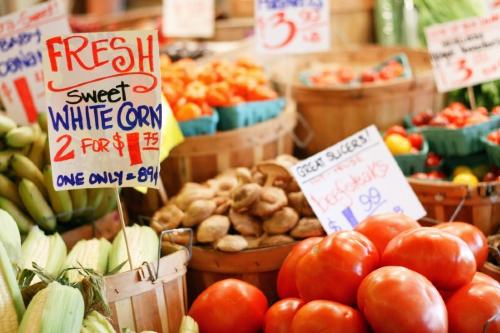Eating healthier can seem like an expensive choice, but many healthy foods and dishes can be made on a tight budget! Here are some tips on saving money while eating healthy.
Tips for Saving Money on Food
1. Plan ahead.
- The biggest impact that you can make on your food budget is planning ahead. Planning ahead means saving money with coupons and sales, planning to have enough leftover foods at home, and planning to make healthier choices.
- For more information on the benefits of meal planning and some tips on how to do so, see our blogs on Meal Planning Steps for Success and Tips for Meal Planning.
2. Bring a shopping list.
- Spend a little time planning your meals for the week and writing up a shopping list. Make sure to bring your list to the store so you won’t forget anything! Sticking to items on your list will ensure you don’t spend extra money and that you won’t buy anything you don’t really need.
- If a traditional shopping list isn’t for you, you might like a shopping list app for your smartphone or tablet. There are many free shopping list apps that can do more than the lists made with paper and pen. For example, some apps will let you save previous shopping lists so that you can remember what you normally buy and use the same list over again.
3. Compare similar foods/products.
- The generic or store versions of most food products are typically cheaper than the big brand names and usually have the same taste and nutritional values.
- Generics aren’t always cheaper though, so make sure to compare prices.
4. Budget for the whole month.
- Plan out how much you want to spend on food for the whole month and divide that number by how many times you will go to the store (ex: once a week).
- When you know how much you can spend per trip to the store, it will help you make a grocery list that doesn’t put you over budget for the month.

5. Utilize unit prices.
- If two boxes of the same food are different prices, check the price-per-unit. The more expensive option could actually be a better deal depending on how much food is in it!
- How do you check the unit price? Grocery stores often help you with the math by showing the unit price in a corner of the price tag. Unit price is usually expressed as dollars per ounce, per each, or another small unit. Whichever product has the smaller unit price is cheaper for how much food you get and is often a better deal.
6. Make the most out of coupons and sales.
- Take advantage of coupons offered on products you already buy by looking at your favorite grocery store’s coupons. A little research can ensure that you won’t miss out on the best deals!
- Some grocery stores provide coupon booklets somewhere near the front of the store. Many grocery stores also have online coupons that you can link to your phone number for discounts at the cash register.
- Bonus tip! When a deal on a non-perishable item is really good you might want to stock up! Foods like pasta, canned beans, frozen meats, and frozen veggies can all be stored for a long time.
7. Look over your coupons and receipts.
- It might not be a fun task but looking over your receipt from the store can give you a lot of information and help you save more in the future.
- Look at what items cost the most and least to see how much value you get out of those items. Some items might be more expensive but are worth a little extra money because they add convenience to your life or because they are a healthier choice!

Other Way to Save
As seen above, your budget does not have to keep you from making healthy decisions for yourself and your family. Check out the following blogs for more ways to save money while leading a healthy lifestyle.
- Shopping for fresh produce or local products at the farmer’s market? Check out our blog on Saving Money at the Farmers Market for ways to support local businesses and buy produce at its peak of freshness!
- Looking to start a home garden on a budget? You can actually save money on seeds by using leftover fruit and vegetable scraps. Check out our blog on Growing Food from Kitchen Scraps to learn more.
- Did you buy too much fresh produce at the grocery store and now it’s going bad? Don’t let your money go to waste! Click here to learn how to blanch vegetables so they last longer. And check out this blog for other ways to minimize food waste.

Planning ahead and making strategic decisions can help you make healthier choices while keeping your budget on track. Hopefully, this blog has given you some new ideas for ways to shop smarter and not harder.
Written by Sarah Stotz, Ph.D. and RDN, LD, Darci Bell, RDN, LD | Reviewed by Leslie Davis, MS, RD, LD, CDCES, and the Nutrition Education Team
Posted on: October 4, 2021